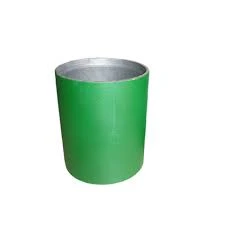- Afrikaans
- Albanian
- Amharic
- Arabic
- Armenian
- Azerbaijani
- Basque
- Belarusian
- Bengali
- Bosnian
- Bulgarian
- Catalan
- Cebuano
- Corsican
- Croatian
- Czech
- Danish
- Dutch
- English
- Esperanto
- Estonian
- Finnish
- French
- Frisian
- Galician
- Georgian
- German
- Greek
- Gujarati
- Haitian Creole
- hausa
- hawaiian
- Hebrew
- Hindi
- Miao
- Hungarian
- Icelandic
- igbo
- Indonesian
- irish
- Italian
- Japanese
- Javanese
- Kannada
- kazakh
- Khmer
- Rwandese
- Korean
- Kurdish
- Kyrgyz
- Lao
- Latin
- Latvian
- Lithuanian
- Luxembourgish
- Macedonian
- Malgashi
- Malay
- Malayalam
- Maltese
- Maori
- Marathi
- Mongolian
- Myanmar
- Nepali
- Norwegian
- Norwegian
- Occitan
- Pashto
- Persian
- Polish
- Portuguese
- Punjabi
- Romanian
- Russian
- Samoan
- Scottish Gaelic
- Serbian
- Sesotho
- Shona
- Sindhi
- Sinhala
- Slovak
- Slovenian
- Somali
- Spanish
- Sundanese
- Swahili
- Swedish
- Tagalog
- Tajik
- Tamil
- Tatar
- Telugu
- Thai
- Turkish
- Turkmen
- Ukrainian
- Urdu
- Uighur
- Uzbek
- Vietnamese
- Welsh
- Bantu
- Yiddish
- Yoruba
- Zulu
Understanding Casing Pup Joints in Oil and Gas Drilling Operations
Understanding Casing Pup Joints Essential Components of Oil and Gas Drilling
In the oil and gas industry, the efficiency and safety of drilling operations are paramount. One of the critical components that play a significant role in maintaining the integrity of drilling operations is the casing pup joint. This article explores what casing pup joints are, their purpose, and their importance in the drilling process.
What is a Casing Pup Joint?
A casing pup joint is a short section of pipe that is used to connect sections of casing in a wellbore. Casing itself is a protective tube that is inserted into the well after it has been drilled to stabilize the borehole, prevent collapses, and protect water and other resources from contamination. Casing pup joints are typically shorter than standard casing lengths and come in various diameters, depending on the specific requirements of the well.
Purpose and Functionality
The primary purpose of casing pup joints is to bridge the gap between different lengths of casing pipe or to allow for adjustments in the casing string. These joints help ensure that casing strings are properly aligned and securely connected. Without the use of pup joints, operators would face difficulties when attempting to create a continuous casing string, especially in scenarios where precise lengths are necessary due to well geometry or drilling conditions.
Casing pup joints also facilitate the installation of various well completion equipment. They can be specifically designed to accommodate flow control devices, safety valves, or other elements essential for the effective management of well production. By providing flexibility in the configuration of the casing string, pup joints play a crucial role in the overall design of the well.
Types of Casing Pup Joints
Casing pup joints come in several types, each tailored to meet the needs of specific drilling applications. The common types include
casing pup joint

1. Standard Pup Joints These are typically used to make minor length adjustments in casing strings, ensuring optimal fit and functionality. 2. Long Pup Joints These are longer than standard pup joints and are used in situations where more significant adjustments are required.
3. Specialty Pup Joints These may have specific features, such as flanged ends or integrated fittings, designed to accommodate unique operational requirements.
4. API Standard Joints Manufactured according to standards set by the American Petroleum Institute (API), these joints ensure compatibility and safety during drilling operations.
Importance in Drilling Operations
The significance of casing pup joints extends beyond mere mechanical connection. Their proper installation is critical for maintaining the integrity of the casing string and, thus, the overall safety of the well. For instance, if a pup joint were to fail due to improper installation or poor-quality materials, it could lead to catastrophic outcomes, including the collapse of the wellbore or the loss of valuable resources.
Furthermore, the use of casing pup joints can significantly impact the efficiency of drilling operations. When wells are drilled in challenging conditions—such as high pressure or extreme temperatures—the adaptability offered by pup joints allows operators to adjust casing configurations on the fly, minimizing downtime and optimizing production rates.
Conclusion
In summary, casing pup joints are indispensable components in the field of oil and gas drilling. Their ability to connect casing sections, facilitate equipment installation, and adapt to various drilling scenarios underscores their importance in optimizing well integrity and safety. As technology advances and drilling techniques evolve, the design and manufacturing of casing pup joints will continue to reflect the industry's need for enhanced performance and reliability. Understanding these components not only helps drilling engineers and operators ensure successful operations but also contributes to the broader goals of resource recovery and environmental protection in the oil and gas sector.
-
Tubing Pup Joints: Essential Components for Oil and Gas OperationsNewsJul.10,2025
-
Pup Joints: Essential Components for Reliable Drilling OperationsNewsJul.10,2025
-
Pipe Couplings: Connecting Your World EfficientlyNewsJul.10,2025
-
Mastering Oilfield Operations with Quality Tubing and CasingNewsJul.10,2025
-
High-Quality Casing Couplings for Every NeedNewsJul.10,2025
-
Boost Your Drilling Efficiency with Premium Crossover Tools & Seating NipplesNewsJul.10,2025







